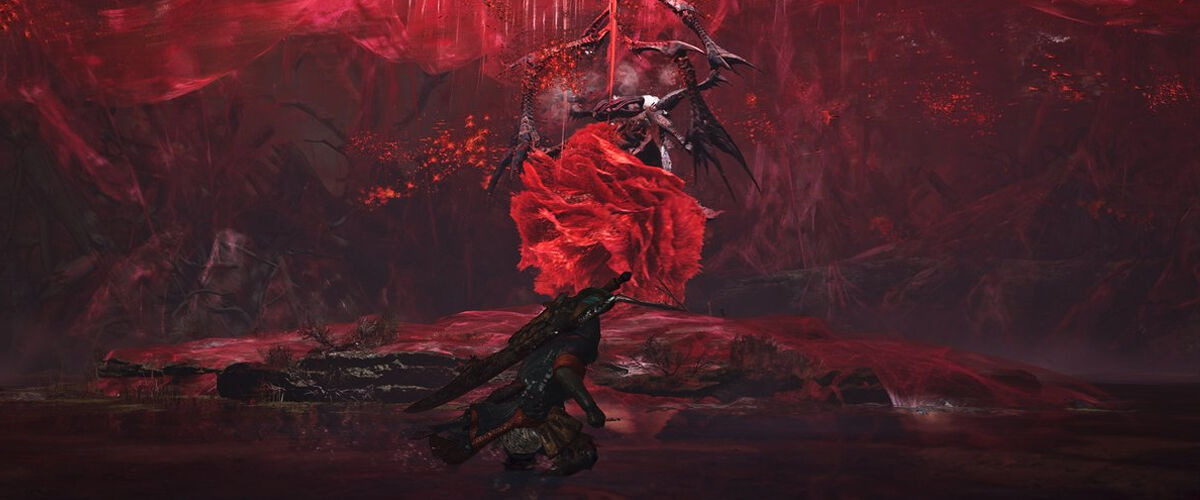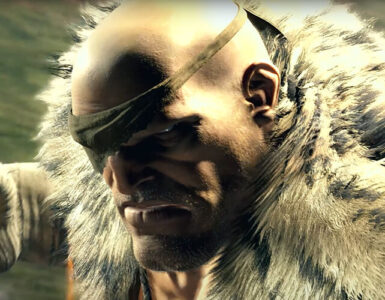This interview has been edited for clarity.
Sometimes, a clear, straightforward direction can work wonders. Rich storytelling and nuanced characterisation are well and good on most days, but there’s a comforting sense of charm that comes with a methodical upkeep. For as long as it’s been around, Capcom’s Monster Hunter series has built its appeal around the loop of hunting beasts for parts, crafting and upgrading gear to defeat even bigger monsters, and doing everything again, cementing itself as a respected veteran in the grind tradition.
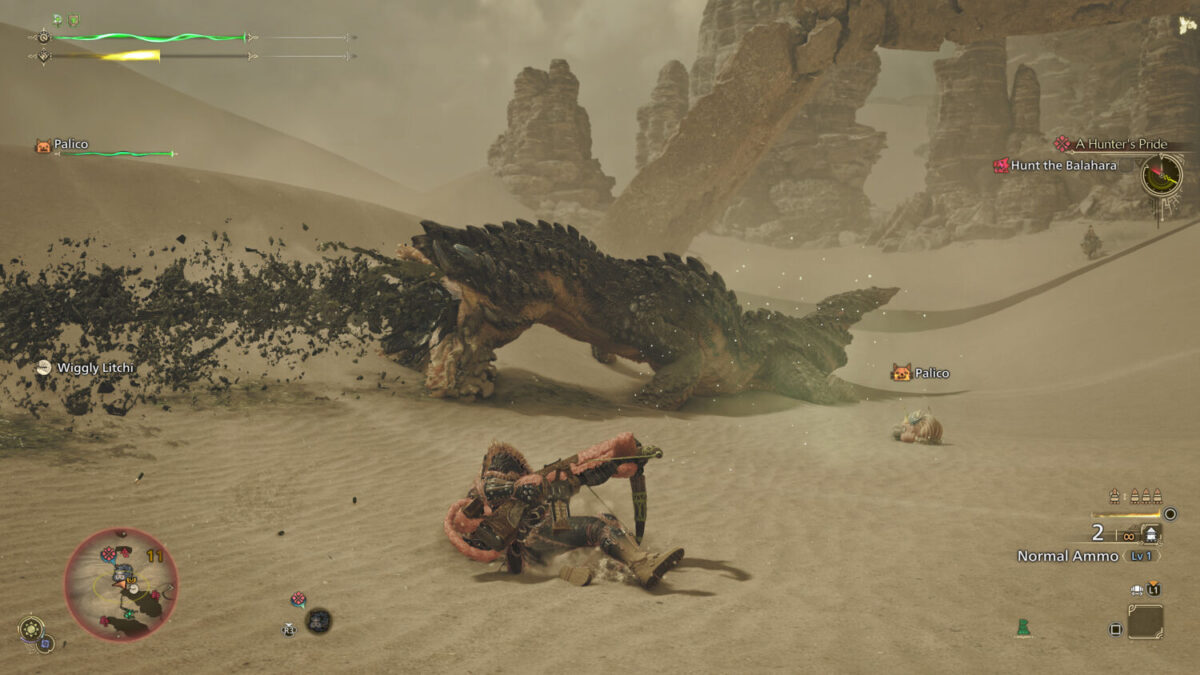
Even so, there’s always room for novelty and change. The long-running franchise is slowly shedding its niche and more-than-intimidating identity, with recent entries like Monster Hunter World and Rise making a push into the mainstream market – an endeavour that bore fruit both times. In its forthcoming outing, Monster Hunter Wilds seeks to deliver an experience that’s more approachable than before, marking the first of several furnishings to a well-established formula, including a stronger focus on storytelling. It wears this ambition and excitement well, as gleaned from a six-hour preview held in Bangkok, Thailand, teasing a scintillating taste of its monster and environmental diversity, immersive exploration, and characteristic combat thrills.
The highly-anticipated title wastes no time in throwing players into the thick of its narrative, which has always been the weakest link for the franchise. Stepping away from the usual fanfare of battling big creatures before encountering the never-before-seen force responsible for threatening the ecology, it pours considerable effort into fleshing out animated cutscenes, now spruced up with the technical enhancements of Capcom’s own RE Engine, and deftly weaves them into the monster-hunting routine. There’s a more spirited and realistic polish to the Hunter Guild’s characters, transforming them from passive companions to individuals with their own histories and personalities.
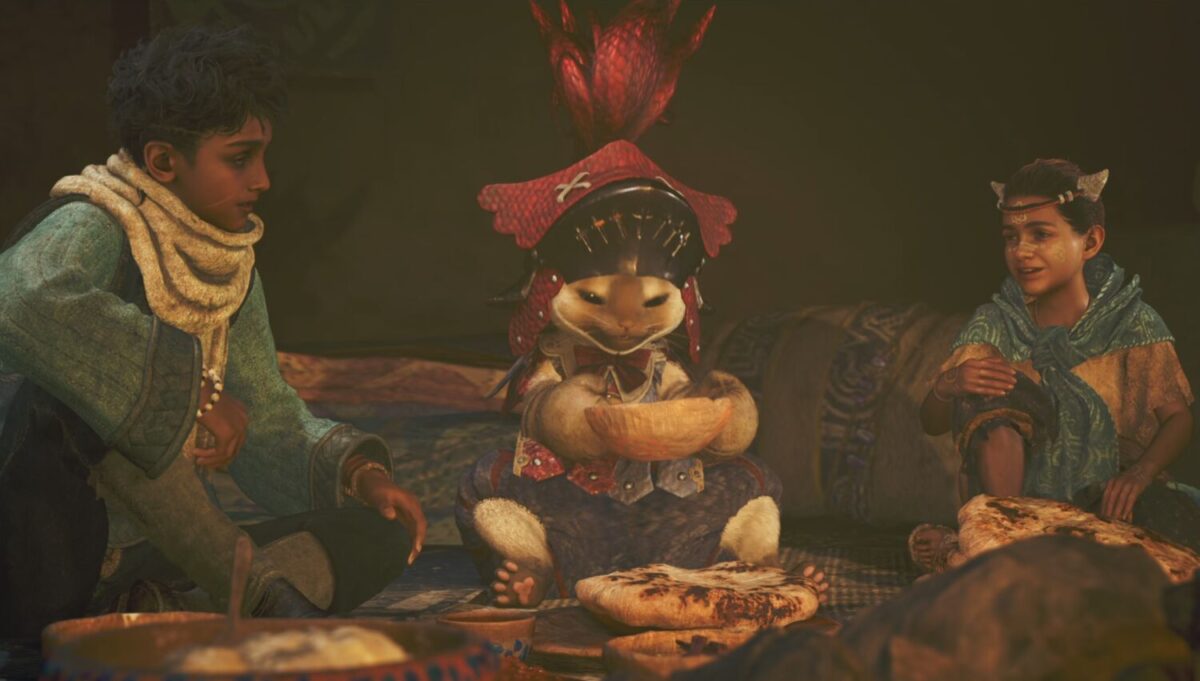
Part of the experience stems from having a fully-voiced player hunter, a first for the series. Dialogue sequences feel more like a two-way street, with small talk and banter interspersed into their journey across the map. The story-focused pivot can be a major change for longtime enthusiasts, especially in the early hours of lengthy cutscenes, where Monster Hunter Wilds lays out the necessary lore basics and introduces the people, locations, and culture of the Forbidden Lands.
Starting with the prologue, players are introduced to a girl called Nona, who enlists their aid to locate her missing brother Y’sai. After saving him from a Chatacabra, a hardy, spiky beast with a giant tongue, they are eased into exploring the Windward Plains and Scarlet Forest, the game’s first two biomes, while fostering ties with a local tribe that doesn’t understand the concept of weapons. Instead, they use wind chimes mimicking the cry of apex predator Rey Dau to scare critters away, which, of course, backfires.
As shared in a previous interview with series producer Ryozo Tsujimoto, the idea here is to combine the relationship between monsters and humans, and relate that to the hunter themselves. Executive and art director Kaname Fujioka reiterates this significance in a separate interview held for select Southeast Asia media, sharing how the game is designed to bring everything together in a way that’s never done before:

“It will reveal a different dynamic than anybody has seen so far. There’s definitely a lot more human drama and that sort of storytelling coming into play, and one of the reasons is because a big theme is to express the human ecology within the Monster Hunter universe.”
There’s little to worry about about the denser narrative segments, too. Capcom’s soon-to-be-latest is quick to put concerns about slowing down to rest, thrusting players right into the thick of the action less than 30 minutes after customising their character and Palico (aka the tutorial fight against the earlier mentioned Chatacabra). This tight pacing follows through to a major story development at a slightly later juncture, where the interception of a monster attack at a village transitions smoothly into the next part of the same mission – navigating to the Scarlet Forest from the Windward Wilds – before ending with a hunt, aligning more with the traditional role-playing game (RPG) experience.
There’s no question that hunts are the best part of Monster Hunter, and Wilds has plenty to offer even in its first five hours. Apart from the Chatacabra, the preview covered six other daunting, hard-hitting critters as part of its story: Quematrice, Congalala, Lala Barina, Balahara, Doshaguma, and a repel quest for Uth Dana, alongside two more in the Oilwell Basin and Iceshard Cliffs in a different play state (Rompopolo and Nerscylla, respectively).
Keeping its strong track record, the game continues to impress yet again. Each of these beasts sports a distinctive look that sets them apart from one another, with their move sets and behaviours corresponding to their respective design identity. The spider-inspired Lala Barina, for instance, scuttles around quickly and uses its spindly limbs to attack, while the desert-dwelling, serpentine Balahara can create quicksand traps and cling to walls. However, the Pompopolo is easily the most eye-catching of the lot – with a disproportionate body covered in unsightly purple shades, it cuts a grotesque figure and wields the ability to hurl poison.
Like before, players can expect a sense of scale when it comes to giant monster encounters, evoking fear-tinged awe in the opening moments that turn into great satisfaction upon victory. At the centre of it all is Arkveld, the equal-parts-majestic-and-daunting “White Wraith” that dished out devastation in the first wave of the second open beta, with technological improvements bringing the intricate whip-like movement of its tail to life.

It’s a creative decision rooted in realism and the monster’s ecology, as Fujioka highlights. With each new monster, there’s a lot of emphasis on ensuring that its abilities are fresh and interesting, but still “grounded in reality and within the setting of the monster as it is – a living being within the world.”
“You just can’t have the monster doing whatever within their fragment as long as it’s interesting; it [also] has to match its ecology and the monster’s origin story, and with so many new iterations, there are going to be instances where maybe two monsters both have the same ability to, say, use fire,” explains the series veteran. “In order to make each of them unique and different from past monsters, that ability to use the fire has to be different, and it has to be grounded within the monster’s ecology itself.”
The attention to detail extends to crafting a natural environment that takes centre stage in Monster Hunter Wilds. Building on the franchise’s existing focus on realism, it introduces the concert of herds and their movement within the world, alongside a dynamic weather system, where certain species will appear only under the right meteorological conditions or during a fixed time of day. Be it alpha predators or their smaller, less intimidating counterparts, there’s no staying in one location here – instead, they are free to roam around the map, sparking random encounters from one player to another.

Play your cards right, and all the pieces will fall into place. Halfway through a hunt for an Alpha Doshaguma in the preview, a passing thunderstorm presented the chance to lure it into a spot where lightning would strike and whittle down its health. In another separate instance, two Alpha Doshagumas went toe to toe against each other, making it easier to take down the surviving member with a short string of combo attacks. It’s an exciting spectacle to behold, lending a lifelike quality to the world and painting a promising, optimistic image of the series’ future.
“We really focused on developing the monster as it would have been a real, living being, so thinking about all the details going into their behaviour and how they interact with the environment, like, ‘What did they eat normally? Or what would they be doing when they’re not fighting the hunter?’” Fujioka emphasises, adding that the biggest challenge was balancing “unique and interesting” characteristics with “building a complete and holistic design around the monster and [the] actual locale that it resides in”.
The semi-open world certainly feeds into the organic fabric of immersion. While Monster Hunter Wilds still limits exploration during specific moments of the narrative, there’s significantly less hand-holding in terms of gameplay structure, with navigation feeling more seamless and liberating than ever. Gone are the days of posting quests on the board and teleporting into a loaded map; here, the new Seikret mount greets players with a welcome dose of maneuverability, allowing them to move around freely and discover things on their own, while completing story missions and side quests in any order and at their own pace.
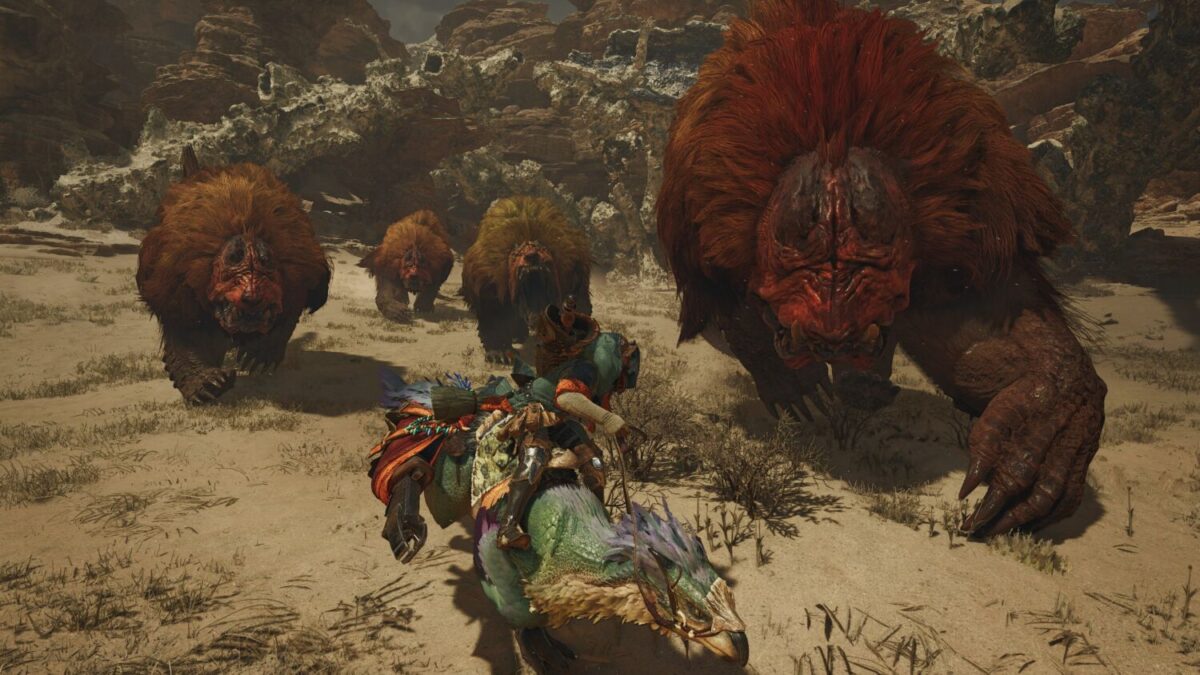
For those who don’t trust their sense of direction, the Seikret comes equipped with an auto-navigation feature that can be toggled off when not needed – whether it’s climbing or sprinting to the objective point. Riding on its back also accentuates the added sense of freedom, especially since hunters can now carry and switch between a second weapon, reducing the hassle of returning to base and changing their main selection.
It remains to be seen how the team’s design philosophy will flesh out the world of Monster Hunter Wilds, but the game’s first two biomes proved to be delightfully different and full of life. Where the Windward Plains boasts golden savannah plains, jagged canyons, and arid sand dunes, the Scarlet Forest reveals lush greenery, ancient civilisation ruins, and large bodies of water with a peculiar red hue that turns bright blue outside of the rainy season. Meanwhile, the dark, cavernous Oilwell Basin is home to vast caves, tar pits, oil lakes, and smoke-spewing thermal vents.
This distinction gives each of them a personality to call their own, with the individuality rooted in and circling back to ecology. With the Scarlet Forest, for example, Fujioka put a lot of thought into fleshing out the background behind its “very striking” red hues, such that it fits naturally into the game’s logic.

“To just make the colour red, you have to think about the entire ecology of the environment, so then I went back to think about the scientific and realistic reasons of why [the water] would turn red, which informed the worldbuilding of the entire locale itself, and how it would move between the different phases of the locales we have this time,” he elaborates.
Apart from the enhanced immersion, longtime fans will also find another notable change in combat mechanics and difficulty. Monster Hunter Wilds is shaping up to be the most accessible entry to date, ushering in several new features that smooth out the learning curve, including Focus Mode, Optimal Health and Status Recovery, and guidance from NPCs on choosing optimal equipment.
The first tweak highlights a monster’s wounds, which appear after attacking a specific body part multiple times, allowing players to target them to deal more damage, unleash a heavy finisher by using special Focus Strike attacks, and eventually knock the beast down. Once it gets up, they will be led on a chase to the next point, and the cycle repeats until the monster is defeated. In play, the wounding mechanic works like a charm, delivering a satisfying punch whenever a body part is chipped off – though it can sometimes be too efficient (yes, a strange thing to say) and dull the appeal of using normal attacks against weaker monsters.

In the same vein of streamlining gameplay, Optimal Health and Status Recovery removes the need to choose the exact healing items, while weapon loadout recommendations from Alma, the hunter’s Handler, go hand in hand with the Training Area in camp to facilitate understanding of how each type works. Amid the introduction of more assistance tools, Tsujimoto stresses the game cycle itself hasn’t been dumbed down in any way, so enthusiasts can expect familiar elements like before.
“When you’re playing it, throughout the entire game cycle, it’s definitely not something that has been watered down or become simpler compared to World or past games,” assures the 50-year-old. “It’s just that there’s a little bit more to get used to in the beginning, but when you start playing till the end, there’s still plenty of that Monster Hunter content that veterans will be very happy with.”
Indeed, the Monster Hunter Wilds preview proved to be more approachable than expected. Even as a series newcomer, most of the hunts were manageable, and the thrill of the battle never truly wore off, resulting in an overall enjoyable affair. Where the gap in experience shows is during more challenging encounters in the Oilwell Basin, which require a more intimate knowledge of a weapon’s ins and outs and dole out a harsh punishment for lacking technique.
The forthcoming instalment, taking after its predecessor, inherits the same 14 weapon types, running the gamut from the Insect Glaive and Switch Axe to Gunlance, with refinements made to their previous designs – some more than others. Ranged weapons like the Light and Heavy Bowgun, as well as the Bow, can now fire normal, pierce, and spread ammo and coatings unlimited times, whereas the Insect Glaive brings back the Vault Dance ability that was missing in the game’s earlier builds.
The Dual Blades and Insect Glaive were primarily used in the hands-on session, with the Light Bowgun serving as a ranged substitute. As fans would know, all three options feel different in hand: the Bowgun has more weight to it, the Insect Glaive offers extra reach, and the Dual Blades are a blur in combat. Their movements and animation also come with a touch of fluidity and crisp impact, especially when unleashing Vault Dance and the Dual Blades’ Demon and Archedemon modes, where flashy attacking flair seeps through the excitement – the first with aerial maneuvering, and the second with whirlwind attacks.

Five hours in, and Monster Hunter Wilds is already brimming with promise. While there are some reservations about its ambitious pivot to a stronger narrative focus, the long-awaited outing is set to cultivate the best parts of its legacy and weave in new elements to make the world come alive. It won’t be easy living up to sky-high expectations, but one thing is certain: monster-slaying fun is here to stay.
Monster Hunter Wilds releases on 28 February 2025 for the PS5, Xbox Series X|S, and PC.

